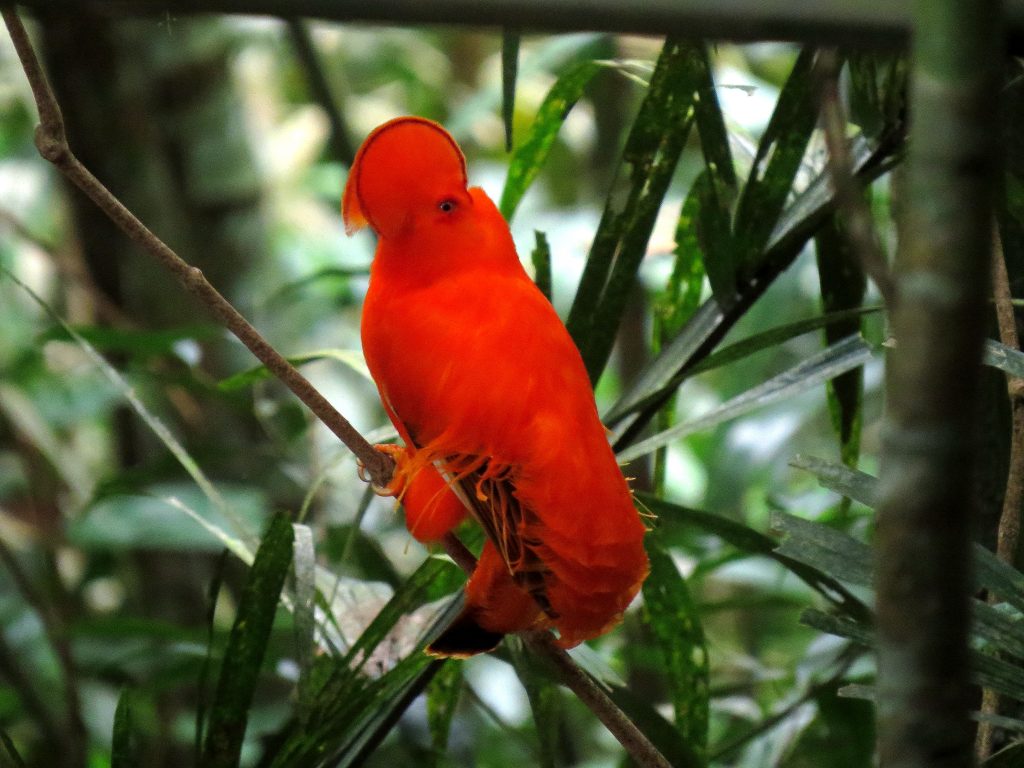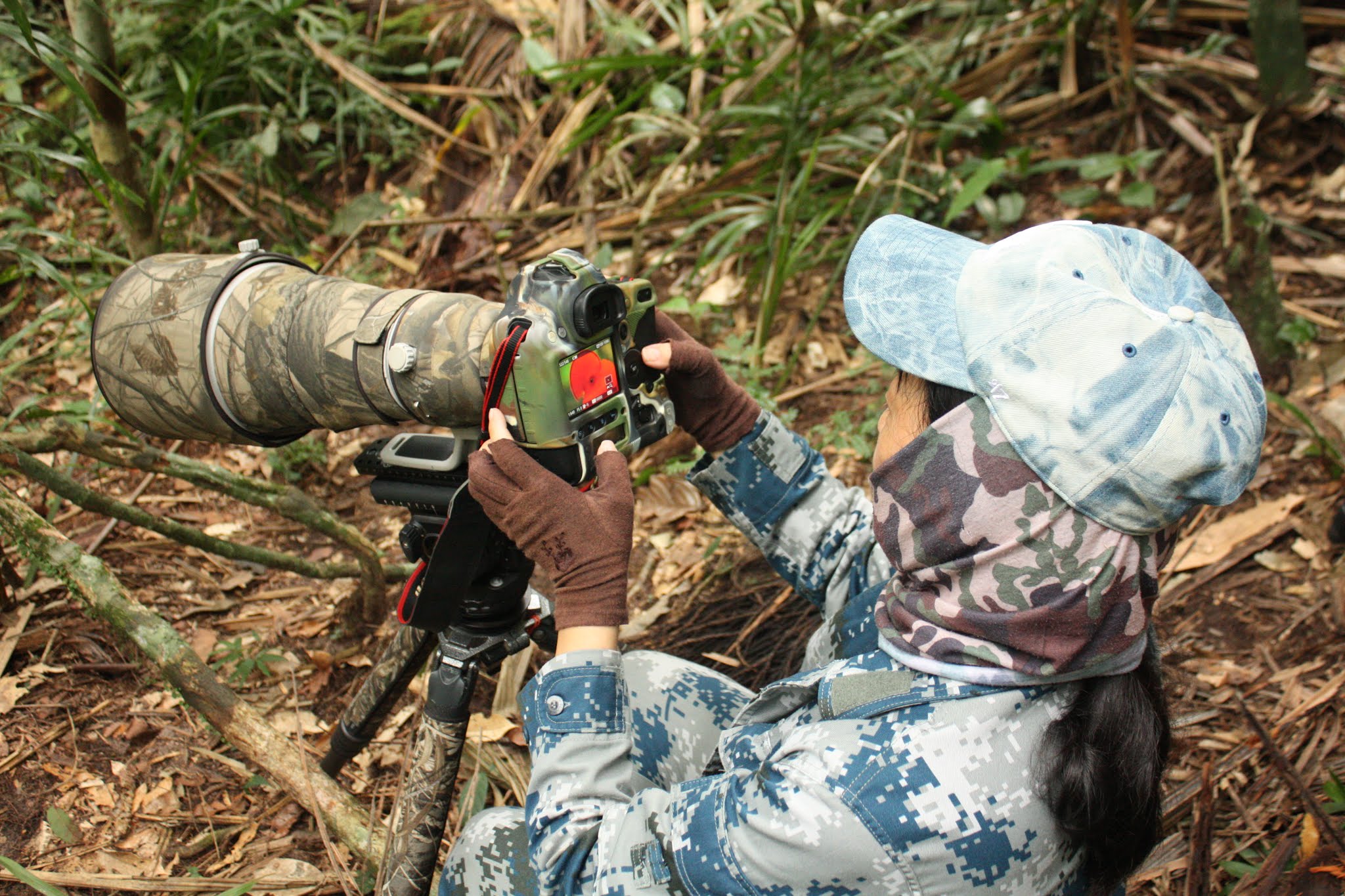“For ten minutes we have to stay here quietly. He will only come to us if we’re very still and make no noise.”
Ornithologist César Arredondo’s orders, given in a low voice, are translated into English and then into Chinese. A group of Chinese photographers sit waiting obediently in the middle of a humid forest behind erected tripods and cameras which, owing to their size, look more like telescopes.
Suddenly, an electric orange flash appears. A small bird with a half-moon-shaped crest, about the size of a raven, rests on a branch. A moment later it disappears. It was the Guianan cock-of-the rock (Rupicola rupicola), an elusive species that only inhabits countries in South America’s Amazon Basin.
Lenses rotate quickly, desperately trying to focus through dense foliage. There is dead silence. The photographers’ nervousness is palpable. “Please stay where you are. It will come back. Stand very still,” Arredondo begs.
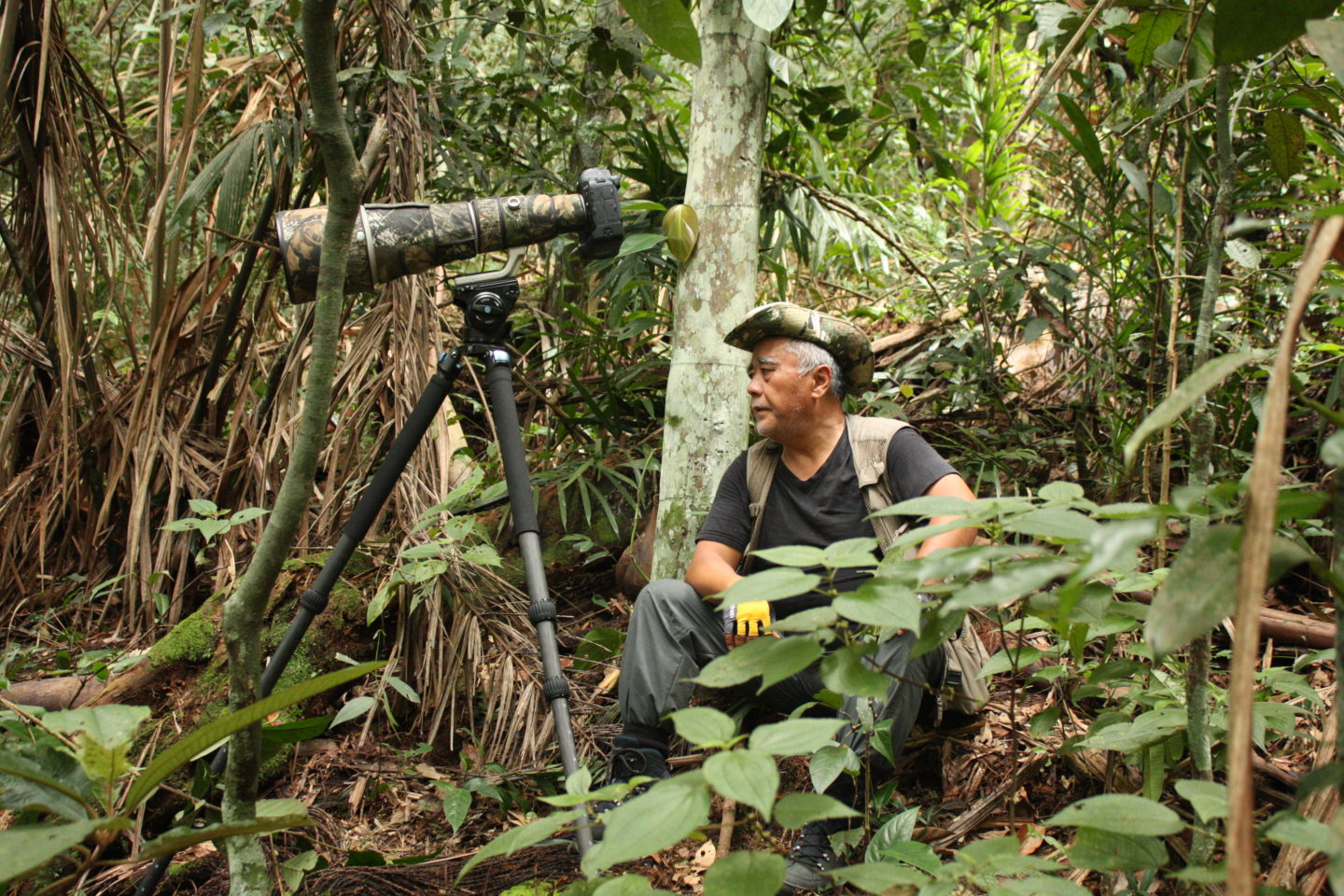
A few minutes later, the cock reappears on the scene and settles on a branch in front of them. A flurry of shutters is unleashed, sounding like an army of typewriters tapping furiously in concert. For more than an hour this typically evasive bird jumps from tree to tree, showing how photogenic it is, posing for the latest model Canon cameras. It is “perching” in bird watchers’ language.
Half the world for a bird
“We spent a lot of money and time to come here, including an 18-hour flight and many hours on the road. All this effort to get here, but it paid off the instant we saw the bird,” says Liu Yi, a 54-year-old amateur photographer from Jinan, in China’s eastern Shandong province. She is dressed from head to toe in blue military camouflage. Even the telephoto lens of her camera is covered with a brown leaf camouflage pattern.
For the past 23 days, she and five other Chinese enthusiasts toured half of Colombia on a special bird watching tour. It began in the capital Bogotá and took them through seven Colombian departments in search of birds like the sword-billed hummingbird and the multi-coloured tanager. Their journey ended in this Guaviare forest, a lush region where the jungles of the Amazon meet the vast plains at the foothills of the Andes.

Although they encountered more than a hundred different birds along the way, their objective was always very clear: to find the two existing species of the cock-of-the-rock.
“It is like the bird was waiting for us,” says Ling Zi Chuan, a 43-year-old graphic designer from Xian in northwestern Shaanxi province, as he reviews the hundreds of images he took from every possible position. This time they were lucky. Two weeks ago they visited a farm near the Farallones National Park in Cali but couldn’t capture the Andean cock-of-the-rock (Rupicola peruvianus). Though they spotted the other species of cock from afar amid the drizzle, they were never in a position to take a picture. In Guaviare, in the tranquillity of its lek, or courtship site, a male strutted proudly around the tiny boxing ring it had cleaned. It serves as an arena to fight other birds and to attract the less colourful brown-plumaged females.
The cock was not the only sighting in Guaviare. In a lagoon, they saw a skunk bird, or hoatzin, feeding its two chicks by mouth. At the top of a nearby tree, they saw the silky plumage of the bare-necked fruitcrow. In a wetland area, they came across a group of horned screamers, with their raucous, far-carrying cry that resembles that of a donkey. One after the other, they saw the scarlet-crowned barbet, the slender-billed kite, the svelte sunbittern and the fast white-eared jacamar.
Unparalleled biodiversity, unprecedented opportunities
With 1,912 bird species, Colombia is a paradise for bird enthusiasts. Despite being the country with the most birds in the world and boasting a great diversity of landscapes and ecosystems, Colombia is only beginning to take its first steps towards profitable birdwatching tourism.
With the historic Peace Agreement signed between the Colombian government and Marxist guerrilla group the Revolutionary Armed Forces of Colombia (FARC) in 2016, security conditions have improved notably in many regions of the country. This is providing a strong boon for tourism. Guaviare, one of the country’s most biodiverse departments, and also one of the poorest, was for years one of the operating centres of the 13,000 guerrillas who, in July 2017, laid down their weapons. It was one of the regions hardest hit by decades of violence.
With an almost non-existent private sector and one of the highest rates of deforestation in Colombia, Guaviare is hoping to undergo a sea change that will allow it to develop job opportunities, whilst preserving its natural wealth. Nature tourism, including bird watching, is becoming a powerful alternative. There are 550 different species here, a quarter of the total within Colombia.
“Not only is it becoming an economic sector that benefits many families – forest-owning farmers, drivers, guides – but it is also the best ally for conservation,” explains Arredondo, who returned to his native country after qualifying as an ornithologist to set up the first travel agency specialising in nature tourism, aptly named Biodiverso Travel.
This is crucial in a department that has one of the highest rates of deforestation in Colombia and where the Chiribiquete Mountains, home to South America’s largest national park, have just been declared a World Heritage Site. The area around regional capital and tourism hub San José del Guaviare is considered to be one of eight critical deforestation hotspots. It is under threat from the illegal timber trade, the expansion of the agricultural frontier and, above all, the illegal appropriation of land.
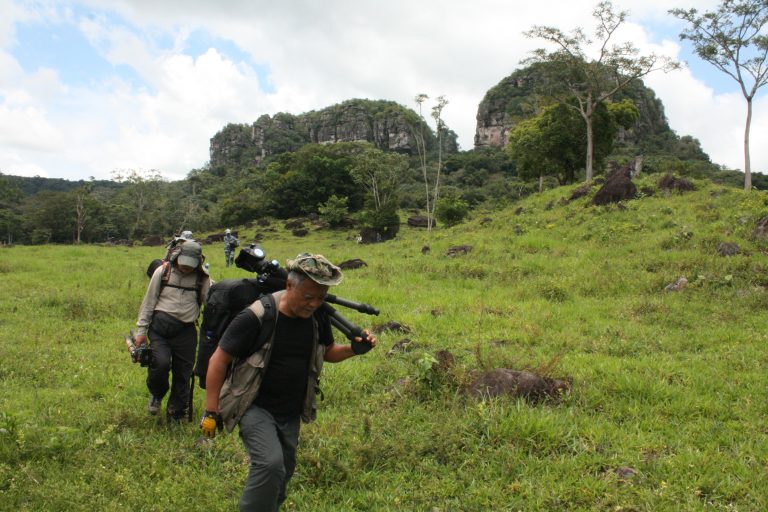
“Although there are birds even in rocky areas and deserts, there is a very clear relationship between birds – both in number and in diversity – and complex ecosystems such as these forests. Even more so when, as in Guaviare, they are connected to plains, hills, wetlands, flood-prone forests and rocky outcrops,” says Rodrigo Botero, director of the Foundation for Conservation and Sustainable Development (FCDS), which has been documenting the dizzying pace of environmental destruction. “This type of specialised tourism is a positive stimulus in maintaining healthy forests which are home to emblematic species such as the cock,” he adds.
Even though it is a small niche, the impact of “avitourism” is two-fold: It generates income for the communities and incentives to change the mentality – prevalent in many areas where agriculture is expanding – that the land is worth more without vegetation.

“When the farmer sees that people pay for the experience of seeing animals such as the cock-of-the-rock and that helping them to achieve their goal has a monetary value, he will think twice before cutting down the forest. This incentive, and the environmental education and local pride generated, are fundamental in a department with so much jungle, but so much deforestation as well,” says Arredondo, who in his spare time co-wrote Guaviare’s first bird guide.
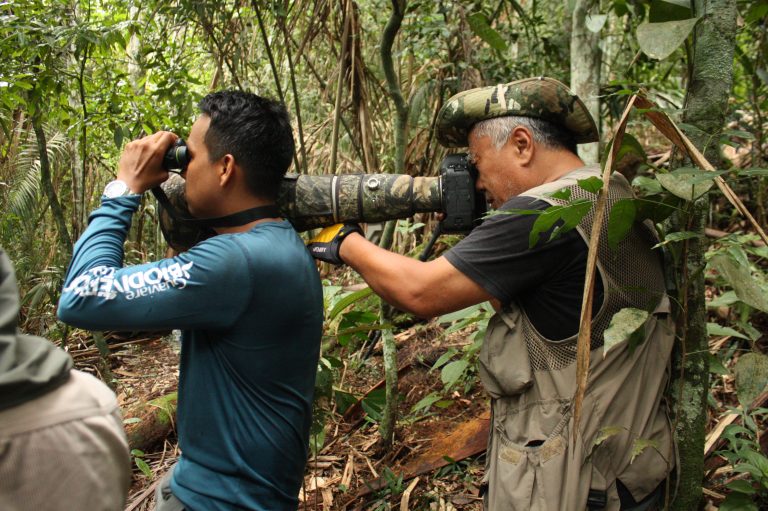
The potential peace dividend from birds is also significant: an academic study by the Conservation Strategy Fund based on 2,000 surveys with US Audubon Society partners, estimated that up to 278,000 tourists may be interested in “birding” in Colombia following the Peace Accord. This could generate revenues of around US$46 million and provide more than 7,000 jobs.
In any case, long-term success and sustainability depends on joint planning between the national government, local authorities and communities. This remains precarious in Colombia.
“There is great potential, but ecotourism – which represents only 5% of the total global tourism economy – is not a panacea, it won’t sustain communities alone,” warns Megan Epler Wood, a professor at Harvard University and one of those who has most studied sustainable tourism. “There must be careful deliberation about the future in the region, with detailed projections of the economic, social and environmental impacts of each development option. A final decision must be based on a balance of these options.”
Epler Wood, well-known for authoring Sustainable Tourism on a Finite Planet visited Guaviare last year and went “birding” with Arredondo. She spoke to locals about the potential of wildlife watching.
Huge potential market
The majority of bird watchers, at least in Guaviare, are British and American. Though they have been coming in smaller numbers, Chinese nevertheless are leaving impressed.
“I believe the cock-of-the-rock is the most beautiful bird in the world. I’m sure that after we go back home from our trip and show people our photos, more Chinese people will come,” says Han Feng, a retiree from Xuzhou, in the province of Jiangsu, who saw the bird for the first time in a magazine and dreamt of seeing it in real life.
Based on official migration statistics, the number of Chinese tourists visiting Colombia is still modest at 16,879 last year. But it is growing rapidly, increasing four-fold since the country’s peace talks began in 2012, and last year surpassed Costa Rica, a country with similar attractions.
As Chinese travel abroad in record numbers (145 million trips last year), and spend their money (US$261 billion, according to the World Tourism Organization), they are increasingly looking for immersive experiences in nature through photography and animal watching. Among those who came to Guaviare, several have already looked for destinations similar to Colombia. Ling was in Costa Rica at the beginning of the year, and Liu travelled to Cuba last year. Both had been to Japan in search of species such as Blakiston’s fish owl or the red-crowned crane, which are prized among birdwatchers.
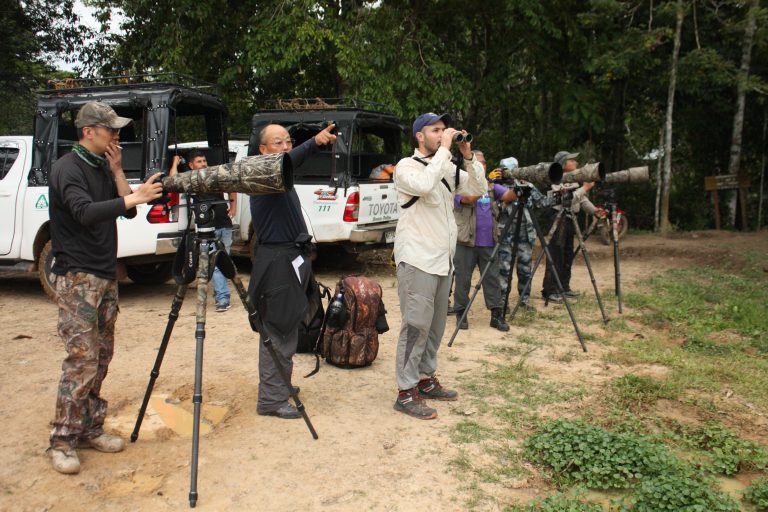
“It is a very large market that Colombia is only beginning to take advantage of, but we are just touching the tip of the iceberg. Thanks to word of mouth, we are going to get a wave of Chinese tourists and we have to be prepared as a country, and as a sector,” says biologist Christopher Calonje, who founded the agency Colombia Birdwatch, and is building an eco-hotel for birdwatchers in Dagua, near Cali. Colombia Birdwatch hosted a total of seven groups of Chinese tourists in the past year, almost all of them photographers.
To fulfill this potential, Colombia and its tour operators must better understand the profile of Chinese birdwatchers. They are usually retired, prefer to travel first class and stay in five-star hotels, are accompanied by a Chinese guide (since many do not speak English), and often prefer eating in Chinese restaurants. Although there is luxury tourism infrastructure in Colombia, it is usually in the cities and not in places where birds are, such as Guaviare.

“There is a lot of room for improvement – roads are in bad condition and hotel standards could be much higher. It can help develop the local economy,” says Han Feng. All in all, a three-week package for Chinese bird photographers to Colombia costs 70,000 yuan (around US$10,200).
In fact, Han Feng’s group got stuck at the end of the trip whilst preparing to leave for Bogotá to catch their return flights. A series of 17 landslides led to the total closure of the road, leaving the region totally cut off from the rest of the world and forcing them to modify their itineraries. Fortunately, they were going to make one last stop to look at the colourful wire-tailed manakin, and could buy plane tickets from the nearby city of Yopal.

Colombia needs to overcome such challenges if the number of Chinese tourists visiting the country is to continue to grow. For now, many Chinese tourists choose Costa Rica, which, despite having fewer than half Colombia’s bird species, has years of experience in ecotourism. It is also smaller and has a well-developed tourism infrastructure. Furthermore, foreigners are only just beginning to change their perception of Colombia.
“Many people in China still have the Hollywood idea that Colombia is a dangerous place. We now know it’s perfectly safe,” says Ling Zi Chuan, who also teaches photography.
He has been delighted by capturing dozens of species of hummingbirds doing aerial pirouettes as they extract the nectar from a flower. “We don’t have any in China. You can see them here, everywhere. The birds all come very close to people. That means people are friendly to them,” he says, while showing one of the images signed using his nickname, Mr Ling, that he uploads to his WeChat account.
Does this group think more Chinese tourists will come? “Yes, for this bird,” replies Liu Yi, showing a close-up of it, its orange crest tipped by a halo of light.
